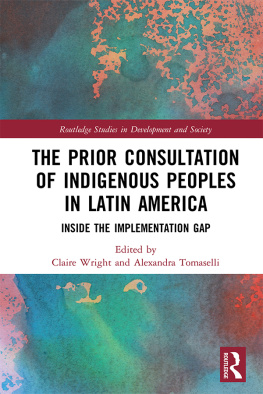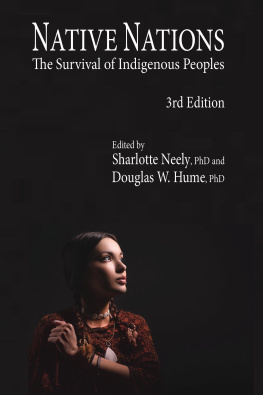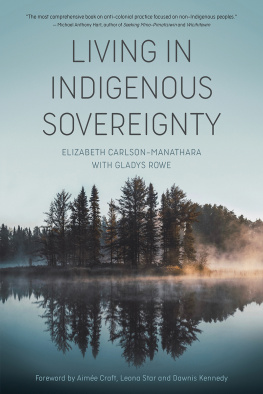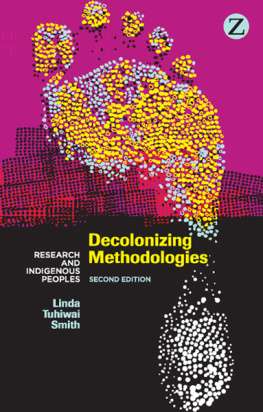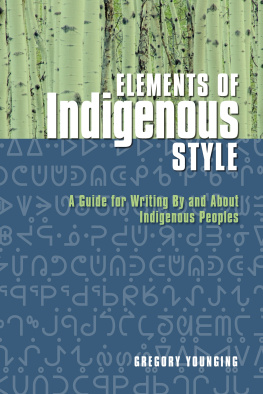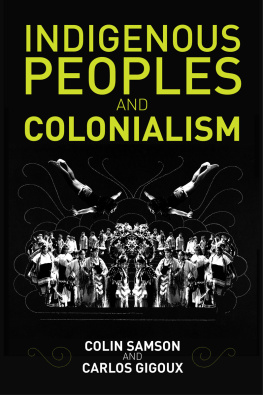Indigenous Peoples and Demography
INDIGENOUS PEOPLES AND DEMOGRAPHY
The Complex Relation between
Identity and Statistics
Edited by
Per Axelsson and Peter Skld
Published in 2011 by
Berghahn Books
www.berghahnbooks.com
2011, 2014 Per Axelsson and Peter Skld
First paperback edition published in 2014
All rights reserved. Except for the quotation of short passages for the purposes of criticism and review, no part of this book may be reproduced in any form or by any means, electronic or mechanical, including photocopying, recording, or any information storage and retrieval system now known or to be invented, without written permission of the publisher.
Fractional Identities: The Political Arithmetic of Aboriginal Victorians by Len Smith, Janet McCalman, Ian Anderson, Sandra Smith, Joanne Evans, Gavan McCarthy and Jane Beer is reprinted from The Journal of Interdisciplinary History, XXXVIII (2008), 533551, with the permisson of the editors of the Journal of Interdisciplinary History and the MIT Press, Cambridge, Massachusetts. c 2008 by the Massachusetts Institute of Technology and The Journal of Journal of Interdisciplinary History, Inc.
Library of Congress Cataloging-in-Publication Data
Library of Congress Cataloging-in-Publication Data
Indigenous peoples and demography : the complex relation between identity and statistics / edited by Per Axelsson and Peter Skld.
p. cm.
Includes bibliographical references and index.
ISBN 978-0-85745-000-5 (hardback) ISBN 978-0-85745-003-6 (institutional ebook) ISBN 978-1-78238-335-2 (paperback) ISBN 978-1-78238-336-9 (retail ebook) 1. Indigenous peoplesPopulation. 2. Indigenous peoplesEthnic identity. 3. Indigenous peoplesStatistics. I. Axelsson, Per. II. Skld, Peter.
GN380.I355 2011
305.8dc22
2011006253
British Library Cataloguing in Publication Data
A catalogue record for this book is available from the British Library
ISBN: 978-1-78238-335-2 paperback
ISBN: 978-1-78238-336-9 retail ebook
CONTENTS
Per Axelsson and Peter Skld
Len Smith, Janet McCalman, Ian Anderson, Sandra Smith, Joanne Evans, Gavan McCarthy and Jane Beer
Tahu Kukutai
Steinar A. Saether
J. David Hacker and Michael R. Haines
Michelle A. Hamilton and Kris Inwood
Per Axelsson
Lars Ivar Hansen
Hilde L. Jstad
Bjrg Evjen
Gunnar Thorvaldsen
Torunn Pettersen
David G. Anderson
John P. Ziker
Sergey V. Sokolovskiy
Andrejs Plakans
John MacInnes
Per Axelsson, Peter Skld, John P. Ziker and David G. Anderson
LIST OF MAPS AND FIGURES
Maps
Figures
LIST OF TABLES
ACKNOWLEDGEMENTS
The production of a scientific and collaborative publication is often a complex process. Our efforts to complete the present volume have been facilitated by several institutions and researchers. We would like to thank the Swedish Council for Working Life and Social Research (FAS), and the Faculty of Arts at Ume University for funding the international workshop, held in Ume 2930 September 2006. This publication also benefited from the support of the BOREAS Eurocores Program of the European Science Foundation (ESF). The Centre for Sami Research and the Centre for Population Studies at Ume University have been key partners in the process, and have contributed valuable assistance. In addition, we would like to thank Anders Brndstrm and Gunnar Thorvaldsen, who together with the editors helped organise the workshop. We would also like to thank David G. Anderson, who has been of great importance in the realisation of this book. He initiated the first contacts, partly as a result of the establishment of the BOREAS project, Home, Hearth and Household in the Circumpolar North, and was instrumental in seeing the volume into print. To all the above mentioned, the scientific reviewers, the people at Berghahn Books, and of course to all our contributors, we would like to give our deepest gratitude.
INTRODUCTION
Per Axelsson and Peter Skld
This volume examines the historical and contemporary construction of indigenous peoples in a number of fascinating geographical contexts around the world. Colonisation, political policies and cultural processes have often excluded or devalued representations of indigenous peoples in official statistics. Researchers are dependent on the highly variable way in which states or territories enumerate, categorise and differentiate indigenous peoples. In a long-term perspective, ethnic markers in censuses or other demographic records have shown great differences between nations, regions and parishes, and other administrative units.
In the autumn of 2006, thirty researchers gathered in Ume in northern Sweden to attend a workshop entitled Indigenous Identity in Demographical Sources. This event revealed the need for international collaboration on these issues. Generally, the situation varies substantially across countries. We need to study and understand why, for instance, Sweden does not register the indigenous population residing within its national borders, while countries such as New Zealand, Canada and Australia do. There is great significance related to the study of statistical constructions of indigenous people. The scholars represented in this book highlight different aspects of indigenous demography: the creation and validity of categories for enumerating indigenous populations, the use and misuse of ethnic markers, micro-demographic investigations, demographic databases, and indigenous identities.
Anthropologists, historians, demographers and sociologists analysing historical and contemporary evidence from Canada, the U.S.A., Australia, New Zealand, Colombia, Russia, Norway, Sweden, Latvia and the U.K. are gathered together in the present volume to explore the statistical construction of indigenous peoples. The approach adopted here is to a great extent historical, thereby providing the necessary long-term perspective for the understanding of the processes that have led to the present situation where statistical categorisation misses much of the cultural and indigenous perception of people and its varying representations. Moreover, there is a strong link between history and indigeneity. Indigenous peoples have used their lands for thousands of years, and their contemporary situation is to a great extent related to their ancient presence in the land.
Indigenous Peoples and Demography examines the differences between genealogical and cultural markers, groups and individuals, and subjective and objective perspectives on indigenous identity. How have different social and institutional systems defined indigenous groups in terms of inclusion and exclusion? What were the reasons for these decisions and how are they mirrored in the demographic sources? The book also discusses how a set of ethno-demographic tools can be developed to categorise how households are constructed within complex ethnic and economic environments, along with how these factors can be read into statistical data.



